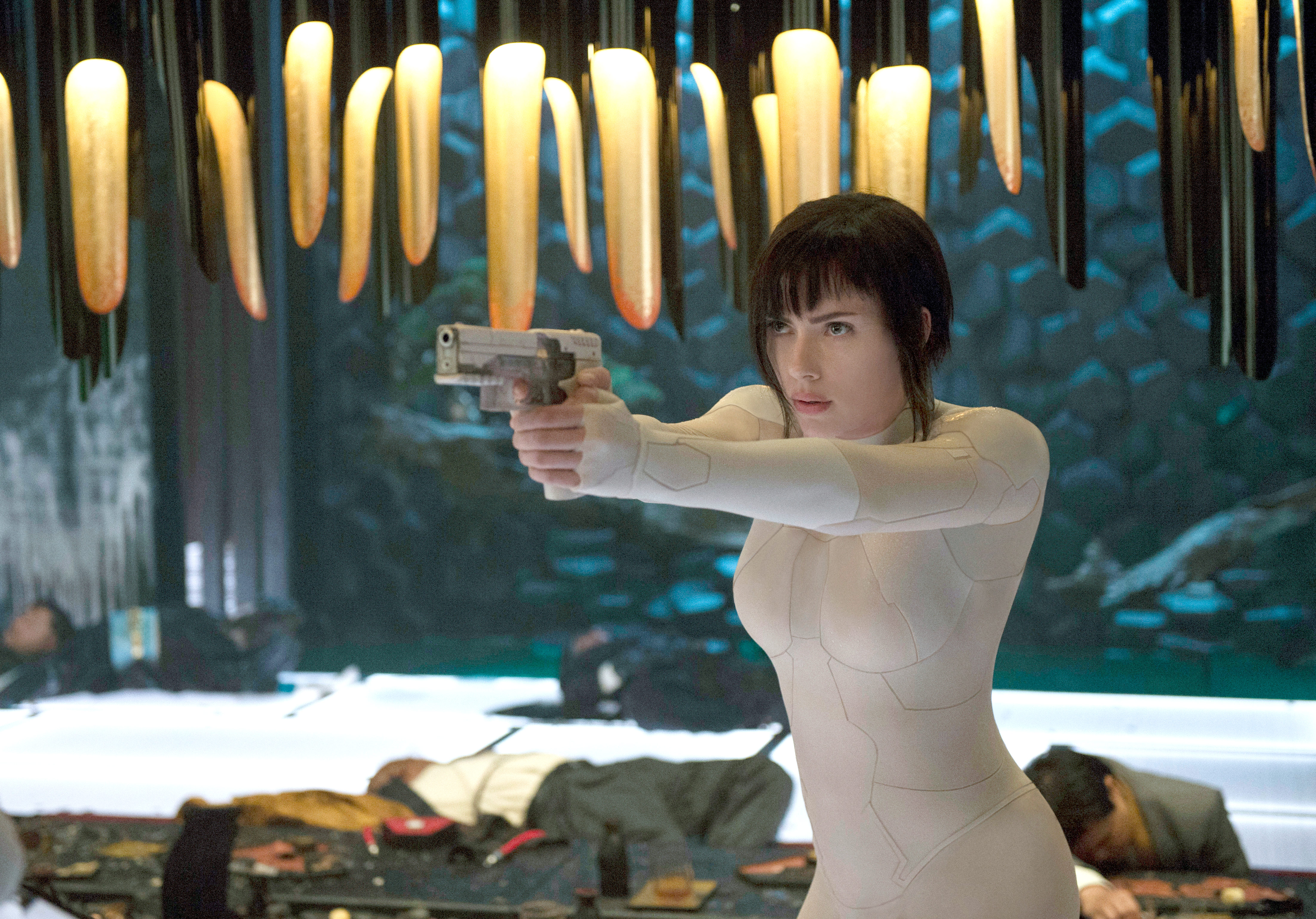Los Angeles (AP) – “I’ve been having glitches,” Scarlett Johansson’s part-human, mostly cyborg robot says in “The Ghost in the Shell.” “It will pass.”
Rupert Sanders’ remake of Mamoru Oshii’s 1995 influential anime classic, from Masamune Shirow’s Japanese manga comics, is a dazzling dystopia. Yet like its sleek, cybernetic protagonist, it’s haunted by a fundamental defect — a bug in the system — that can’t be dispelled, that doesn’t pass, despite the considerable cyberpunk splendor of Sanders’ eye-popping visual feast. It’s the rare movie to earn its “Blade Runner” comparisons. But it also earns its controversy.
Oshii’s anime film — from which the Wachowskis plundered for “The Matrix” — was a moody, mysterious futuristic tale with striking imagery and a buzzing existential drone. Sanders (“Snow White and the Huntsman”), working from a script by Jamie Moss, William Wheeler and Ehren Kruger, streamlines much of the tale and builds out the backstory with a more conventional narrative of self-discovery for the Major (Johansson), whose body (her “shell”) we see majestically assembled around a human brain (her “ghost”) in the opening credits.

The result doesn’t have the same eerie chill as the original, but preserving just a sliver of the hard edge to Oshii’s film would still make “The Ghost in the Shell” more extreme than most any other of today’s franchise hopefuls. Yet casting Johansson in the lead role (earlier dubbed Major Motoko Kusanagi) in a quintessentially Japanese story makes for a perpetual disconnect “The Ghost in the Shell” can’t resolve, though it tries to. Her body may be a robotic artifice but the history of Hollywood whitewashing Asian characters is all too real. There are defenses to her casting, and “The Ghost in the Shell” is, after all, about the erosion of self, not its makeup, ethnic or otherwise. But the black-haired Johansson, while totally game, often appears just as much the tourist in Tokyo as she did in Sofia Coppola’s “Lost in Translation.”
Still, it should also be noted that the original film, in which Major fights in a nude bodysuit, is not without its own issues of representation. Here, the suit, which has the power of invisibly cloaking the Major, is more intentionally unnatural looking. It’s gratuitous nudity, neutered.
Major is an asset, a weapon for the Hanka Corporation, and part of a counter-terrorism force that includes her partner Batou (the up-and-coming Danish actor Pilou Asbaek) and is overseen by Chief Daisuke Aramaki (the Japanese veteran actor and filmmaker Takeshi Kitano). They soon begin pursuit of a hacker named Kuze (Michael Pitt), and track him through the crime scenes and the data trail he leaves behind. The closer she gets, the more glitches begin obscuring the Major’s vision.
New Port City is the futuristic Tokyo-like setting, and though everyone is infused with robotic and digital enhancements, the Major is a one-of-a-kind hybrid. Feeling ever more removed from her “ghost,” she’s cut off from her memories. But the metropolis itself is an altogether glorious amalgam of computer and concrete. Iridescent advertising banners and bubbles crowd the street-level and 3-D holographic designs tower between buildings. Cinematographer Jesse Hall and production designer Jan Roelfs paint a shimmering collage of color that glitters most when water glistens and glass shatters. Some shots have been precisely copied from the original.
In a way, Johansson is very much at home here. As in Jonathan Glazer’s “Under the Skin,” in which she played an alien who disrobed to lure her prey into an infinite blackness, her beauty is utilized for otherworldly means. But it’s the supporting performances from the notably international cast that stand out — particularly Kitano, Batou, Pitt and Juliette Binoche, who plays the scientist who created the Major.
They and the design work make “The Ghost in the Shell” an unexpectedly alluring world, the kind that — not to sound too much like a Hollywood executive — feels rife for further exploration. So if there is a next time, how about this: Giving the Major a new, more authentic shell. Then, we might really have something.
“Ghost in the Shell,” a Paramount Pictures release, is rated PG-13 by the Motion Picture Association of America for “intense sequences of sci-fi violence, suggestive content and some disturbing images.” Running time: 106 minutes. Two stars out of four.




